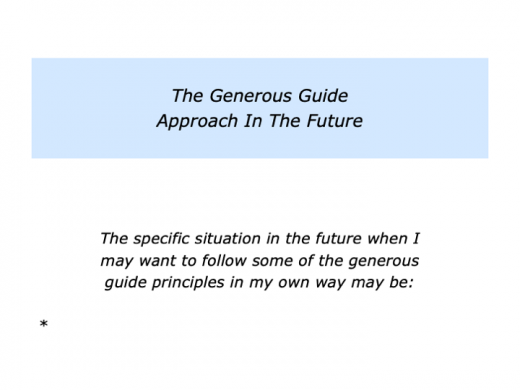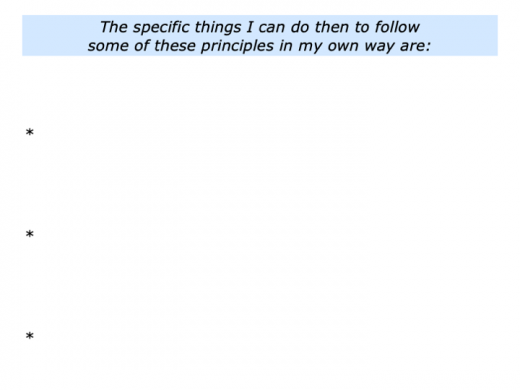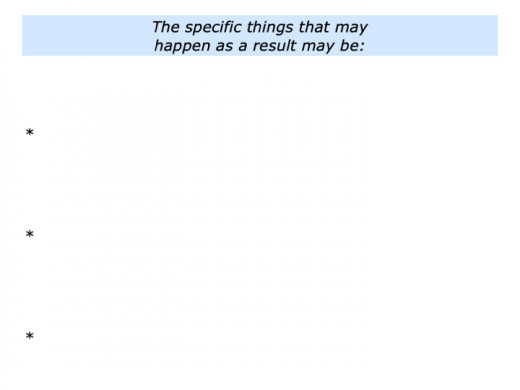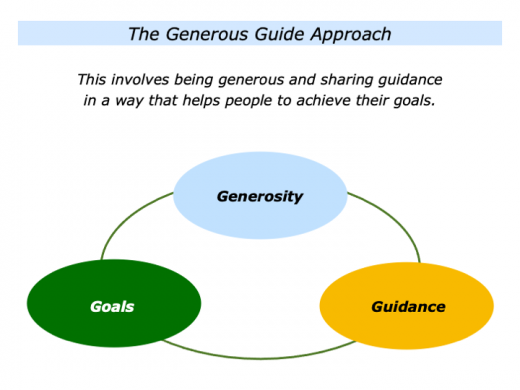
This approach involves being generous and sharing guidance in a way that helps people to achieve their goals. It is one I saw in action early in my career. It was embodied by some of the sages I visited to learn about encouraging people.
Such people often combine the elements of being kind, driven and humble. They see themselves as lifetime students. At the same time they have strong convictions about how to help people during their time on the planet.
Generous guides embody the spirit shown by great educators. They love to share knowledge that helps people to succeed. Different people demonstrate these qualities in different ways. Let’s look at one person who embodied this approach.
Virginia Satir –
A Generous Guide
Virginia was a pioneering family therapist who created many concepts that have been used to build healthy families, teams and organisations. She provided people with tools they could use to build their strengths and find solutions to challenges.
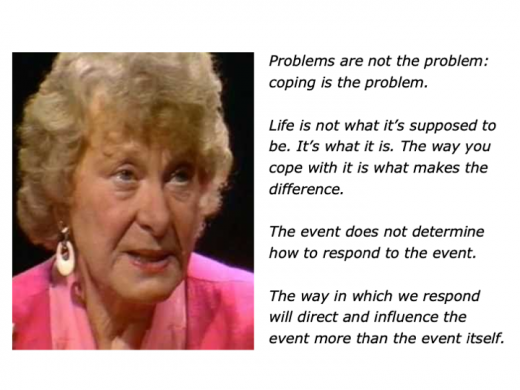
Looking back on her life, Virginia said she was five-years-old when she decided to be a ‘children’s detective on parents’. She explained:
“I didn’t quite know what I would look for, but I realized a lot went on in families that didn’t meet the eye.”
She went on to provide many practical tools that have benefited thousands of people. Below are some of the things she said. You can discover more about her work at the Satir Global Network.
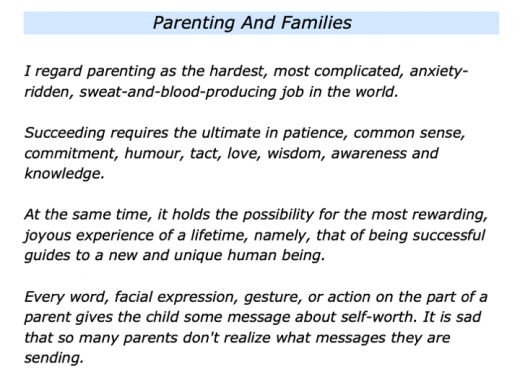
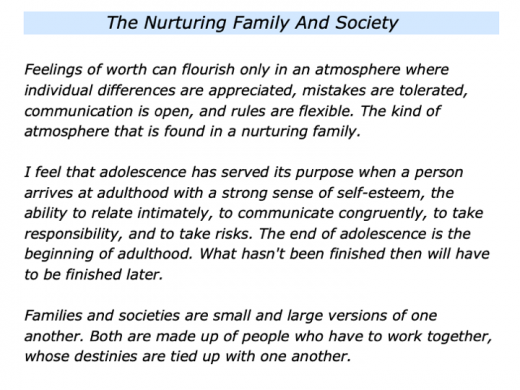
Background And Philosophy
Virginia was born in Wisconsin in 1916. She was the eldest of five children born to Oscar and Minnie Pagenkopf, whose ancestors came from Germany.
She had several medical setbacks early in life. She contracted Mastoiditis when aged 5 and lost her hearing for two years. Seven years later she suffered a life-threatening illness.
Minnie was a Christian Scientist and at first resisted calling medical help. Oscar eventually stepped in and insisted that Virginia get treatment. She had a ruptured appendix and spent five months in hospital.
Looking back, Virginia felt she learned positive things from both her parents. Despite the hospital episode, Minnie was ambitious for her eldest daughter, who showed great ability to learn For example, Virginia taught herself to read by the age of three.
Minnie later insisted the family move from their farm to Milwaukee so that her daughter could attend High School. Virginia said that Minnie taught her how to fix things, while Oscar taught her the value of honesty. Both embodied strong ethics.
They also taught her to focus on possibilities – and solutions – rather than get dragged down by problems. She would later say:
“Problems are not the problem. Coping is the problem.”
Virginia studied hard at High School. Money was scarce – America was going through the Depression – so she took jobs to fund her studies. She then went on to the Milwaukee State Teachers College.
Whilst studying to be a teacher, she worked in a department store and with children at weekends. She also worked at an African-American Community Centre called Abraham Lincoln House. This opened her eyes to racism – people being discriminated against because they were different.
Managing and rejoicing in differences became a key theme in her later work with families and organisations. Whilst extremely practical, she also encouraged people to explore their possibilities.
Qualifying from college, Virginia spent several years working as a schoolteacher. Wanting to broaden her experience, she worked in different cities, including Ann Arbor, St. Louis and Miami, Florida.
Deciding to focus on social work, she began doing graduate work at Northwestern University in Chicago in 1937. Virginia studied on a part-time basis for the first few years – university in the summer – whilst doing her teaching work during the other months.
She then switched to full-time study, finishing her coursework by 1943 and her thesis by 1948. She also got married in 1941 and then divorced in 1949.
Virginia initially found the academic side tough, but she excelled at the practical aspects. The university culture was not conducive to married women who wanted to pursue a career.
Alongside the academic work, she was given a potentially nerve-wracking placement at the Chicago Home for Girls. She flourished in the environment, even without the benefit of ongoing supervision.
Virginia’s approach was considered unconventional but it produced fine results. She would follow this path for the rest of her life. The University of Chicago did finally recognise her gifts. In 1975 it awarded her a Gold Medal for service to humankind.
Her work had a profound influence on generations of individuals, families and professional workers. Here are some of the books about Virginia’s work
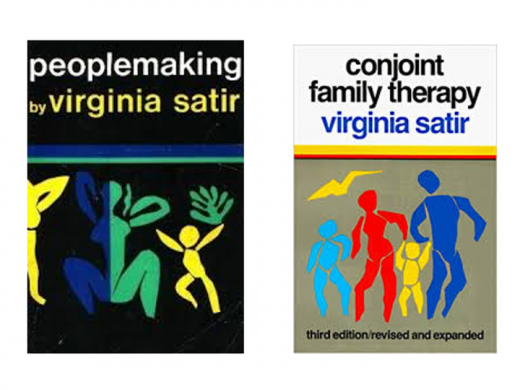
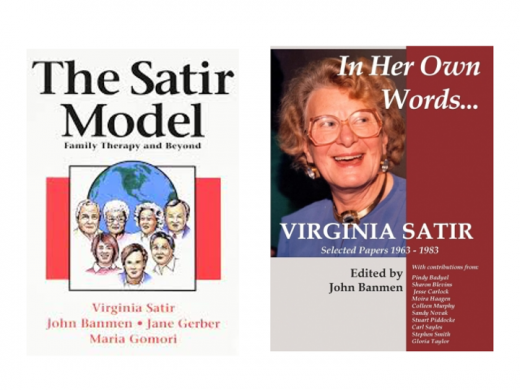
Virginia’s Approach
Virginia completed her Masters dissertation and started her own practice. Looking back on her first therapy session with a whole family in 1951, she realised the value of seeing the whole picture.
This was a time when systems theory – and seeing the whole family as a system – was coming to prominence. Previously the problem child was taken away, treated and then put back in the family. Frequently the problem child relapsed into their old behaviour.
Certainly the person must take responsibility. But there was also something in the system – such as family pain or unresolved issues – that was shifted onto the family scapegoat.
Virginia believed it was vital to help the whole family to grow. During the next decade she pioneered work on family therapy and used many innovative techniques.
She taught people how to see the family as a system which had certain rules. Some rules were obvious but some might be hidden. The family might, for example, have rules about how people got attention – such as by falling sick, creating problems or behaving in other ways.
She helped them to identify the rules around many topics – such as showing affection, expressing anger and managing differences. People were then able:
To see the rules;
To see the consequences these rules;
To practice the rules they wanted to follow in the future.
Virginia used her warmth and insight to educate people about such dynamics. Many felt that, at last, somebody understood their role in the family. She enabled them to create a healthier future.
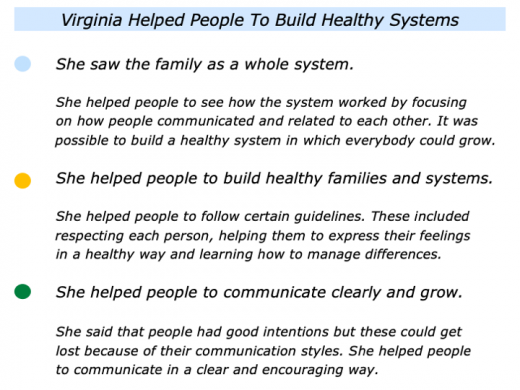
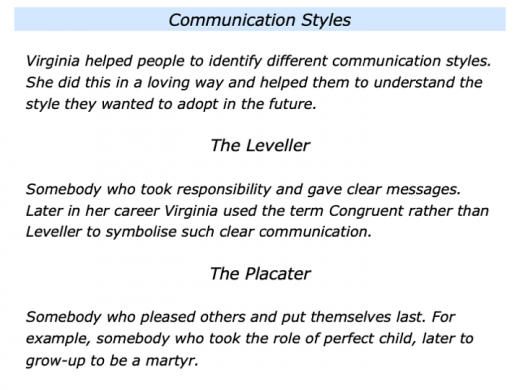
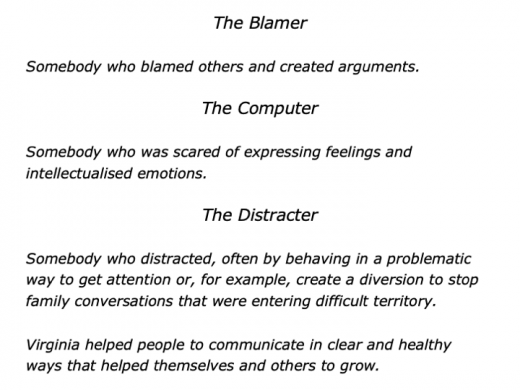
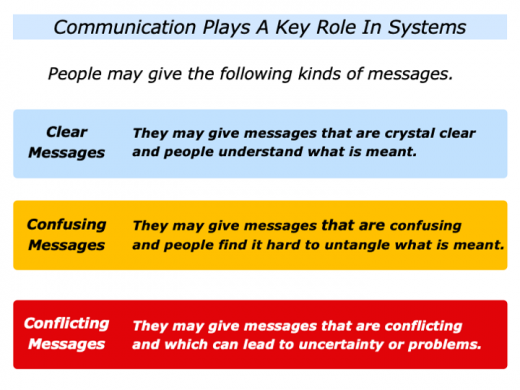
Virginia believed in helping people to fulfil their potential. She saw her job as helping to relieve family pain but did this in a positive way.
She often began by asking the couple to relive the magic of when they first met. She then asked each family member about the best times in the family. Most of all, she gave each person the following message:
“I understand. You want the best for your loved ones and you are doing your best. Sometimes it is confusing that things don’t work out how you intended. Let’s look at how to make them better.”
Communication Can Help
Or Hurt A Relationship
Virginia showed that communication plays a key part relationships. The ways that people communicate with each other can build or break a relationship.
Communicating in a positive way can help to build a relationship;
Communicating in a negative way can hurt and break a relationship.
Virginia’s work led to many therapists teaching people how to communicate in a helpful rather than hurtful way. This helped them to build more positive relationships.
Here is one of the most common exercises on this theme. If you wish, you can try it in your own life or work.
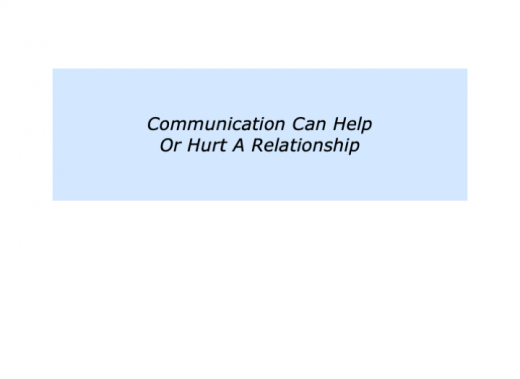
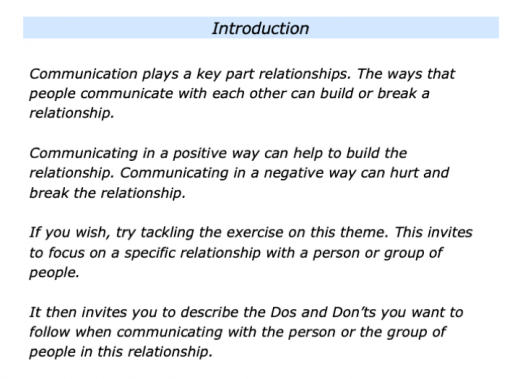
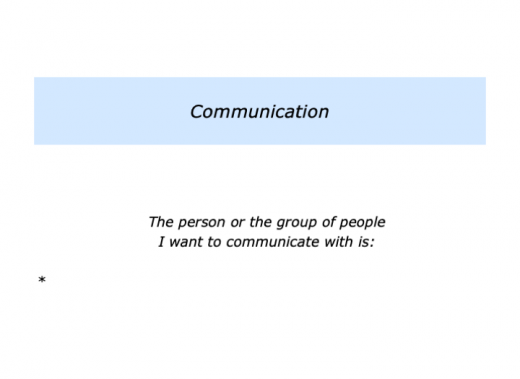
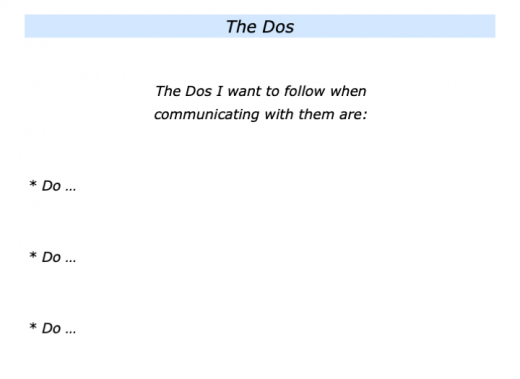
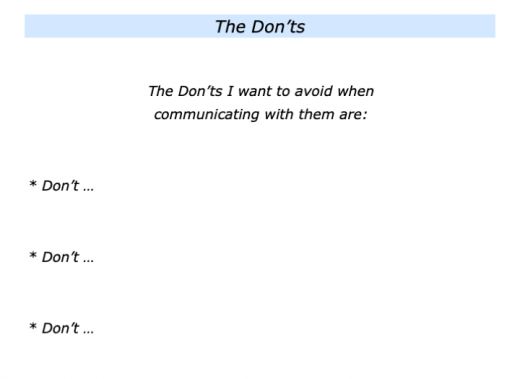
Virginia created many tools for helping people to grow. She invented The Self-Confidence Pot exercise that is described in another article in the blog. This helped a person to understand their Pot Fillers and Pot Drillers. She also helped people to take the next step.
Helping People To
Build Healthy Systems
Virginia found that healthy systems – marriages, families, organisations and societies – demonstrated certain characteristics. They often pursued the following principles:
They shared similar values;
They respected and encouraged differences – obviously within certain parameters;
They built on their similarities and encouraged people to use their differences to tackle challenges and grow.
Sick systems often had people who believed their own values were paramount and suppressed those who disagreed. They also actively crushed differences.
Virginia’s work inspired many people to create exercises that people could use to build partnerships and other relationships. Here are some of these.
Affection, Acceptance And Adventure
– Three Themes In Caring Relationships
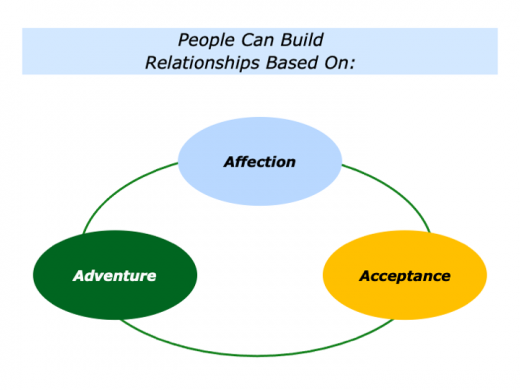
Virginia helped us to learn from healthy couples. People can, however, apply similar principles in other relationships. Healthy couples often base their relationship on affection, acceptance and adventure.
Affection
They show each other affection. Some may do this in a physical way. Some may do it in a psychological way.
They may show affection by making the other person feel welcome and helping them to feel the centre of their world. They may do it in simple ways, such as making them a cup of tea, listening and encouraging them.
Acceptance
They build on the things they have in common. They also find ways to encourage and, in some cases, manage any differences. They recognise that differences can make or break a relationship.
Healthy couples, for example, accept each other rather than constantly try to change each other. They realise that, after a certain time, people do not change all that much. They are clear on:
The differences they want to encourage, because these make the other person special;
The differences they are prepared to accept, because the person probably won’t change certain habits;
The differences they would like the person to change and how. It is vital for them to give a positive alternative.
Regarding the latter differences, they may suggest how they would like the person to behave in the future. But what if the person refuses to change? The person making the suggestion has a decision to make.
They can recognise that the other person is not going to change and accept the difference. They can keep trying to persuade the person to change. They can, if they feel the difference is too painful, choose to leave the relationship because there is no point in being a victim.
Adventure
Healthy couples share adventures together. These can be big adventures or even simply enjoying small talk together. They feel uplifted after their time together.
They may then individually go apart and pursue their own interests and adventures. These are ones that help them to feel alive but that do cause pain in the relationship.
The couple may then come back together to share what they have each been doing. They then build on what they have in common and share adventures. Sometimes this is simply chatting but in a positive way.
Such couples aim to enjoy their time together and also when they are apart. They take this approach to building a mutually enriching relationship.
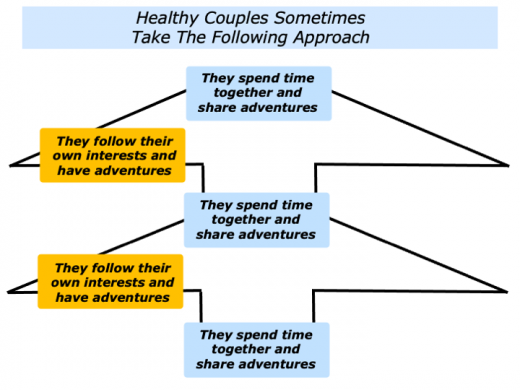
You can, of course, apply these principles in your own way to build with the people that you enjoy being with. Taking these steps will continue to give you positive energy.
There are many views about how people build a good relationship. One model is for people to base their relationship on affection, acceptance and adventure.
Let’s move on to another exercise that people use to build long-term relationships. This explores qualities a person would like in an ideal partner.
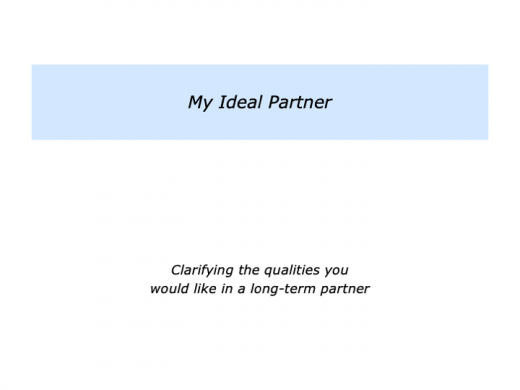
The approach can apply to romantic relationships but similar principles can be followed when building other kinds of relationships. The exercise is in several parts. Here are the themes that it can be useful to explore.
Describe the individual women or men
with whom you have felt encouraged
If you are looking to build a partnership with a man, write the names of the men with whom you have felt alive, accepted and able to be yourself.
If you are looking to build a partnership with a woman, write the names of those with whom you have felt alive, accepted and able to be yourself.
These do not necessarily need to have been romantic relationships, even if you are looking for such a relationship. It could have been a parent, teacher, coach, friend or other person.
Describe the positive qualities in
each of the people you have listed
Each person will have had different qualities. Looking at some of the individuals, you may say for example:
“They accepted me … They listened to me … They were creative … They were a fair fighter … They were self-managing … They were sometimes exciting to be with … They had great vision … etc.”
It is doubtful if every person will have the same qualities, but you may find that certain themes keep occurring.
Some of these qualities may mirror those of your own – such as having a positive attitude. But sometimes a person may have qualities that complement your own and enable you to be yourself. Here is the exercise.
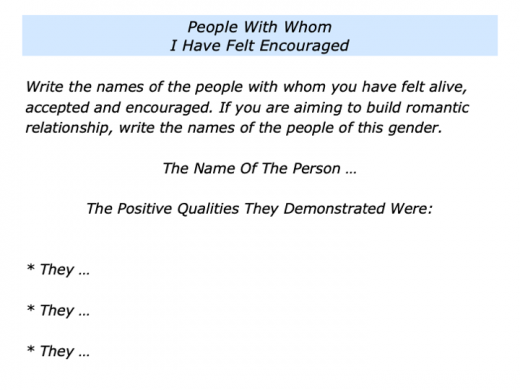
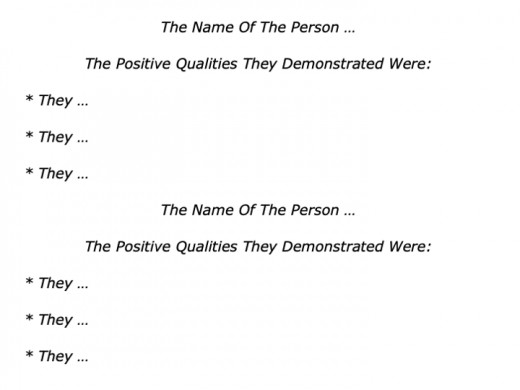
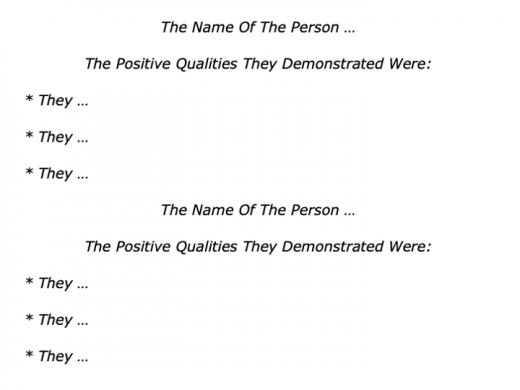
My Ideal Partner – The Qualities
I Would Like In Such A Person
Imagine that you have describe the positive qualities that each person demonstrated. If appropriate, move on to the next step.
Describe the qualities you
would like in your ideal partner
Take a look at the list of the people with whom you have felt good. Looking at these, can you see any recurring qualities?
Bearing these in mind, describe the qualities you would like in your ideal partner. It can be useful to describe quite a lot of qualities and then list these in order of priority.
The qualities you have listed have worked for you in the past and they may work in the future. If appropriate, however, you may wish to list additional qualities you would like a person to demonstrate.
It will be hard to find a person with all the qualities, so it can be useful to list the qualities you want in order of priority. If you want somebody who has a positive attitude to life, for example, it may be hard to live with somebody who keeps complaining.
A person may also demonstrate some of the qualities you want some of the time but not at others. If you want somebody who is energetic, visionary and a doer, for example, they may not always stop what they are doing to listen to you.
Nevertheless, it can be useful to list the qualities you want. Then we will go on to the next step.
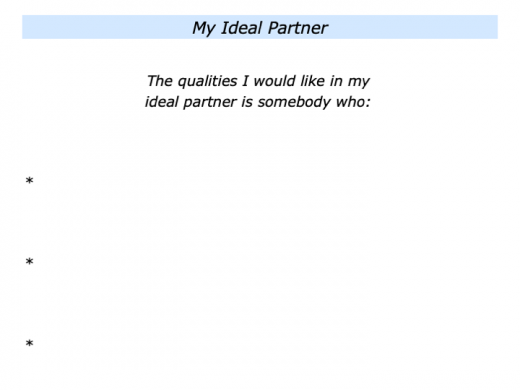

My Ideal Partner –
Taking The Next Steps
The next steps you will depend on: a) whether you are already in a relationship; b) whether you are looking for somebody with whom to build a relationship.
Imagine you are
already in a relationship
Bearing in mind the qualities you want in an ideal partner, you may want to explore the following themes.
Which of these qualities does my partner already demonstrate?
Which qualities may they have that they can develop?
Which qualities may I wish to, if appropriate, look for elsewhere?
If your top priority is to be with somebody who encourages you, for example, it will be important to that your partner demonstrates this quality. Otherwise life will be difficult.
There may be some qualities you would like that your partner may have the ability to develop. If these are latent, then that may be possible. But the nurturing of these may need to be done in an encouraging rather than challenging way.
It will be hard to find a person with all the qualities you would like. When appropriate, it may be important to find ways to get these outside the relationship. This will need to be done in a way that helps rather than hurts your present relationship.
Looking at the qualities you would like in an ideal partner – and bearing in mind that nobody is perfect – you can ask yourself:
Is there the basis for building in our relationship?
If so, how can I encourage my partner and continue to build a good relationship?
If there is not the basis, what decisions may I need to take?
It can also be important remember that many long-term relationships go through certain stages.
Some marriages, for example, take different forms as they develop. These may differ from how things were at the beginning. But the individuals may still care for each other and develop an enriching relationship.
Imagine you are looking for somebody
with whom to build a relationship
This can involve exploring a different set of questions. It calls for:
Clarifying the qualities you want in an ideal partner;
Clarifying the kinds of places where you are most likely to meet somebody who demonstrates these qualities;
Clarifying the things you want to do when you meet somebody who may have these qualities.
Imagine that you are looking for somebody who is caring, supportive and yet not putting themselves down. You can ask yourself some of the following questions.
What are the kinds of places where you are likely to meet this kind of person? What are the kinds of jobs such a person might do? How can you increase the chances of meeting such a person?
As we know, there are many ways to meet people and build good relationships. The My Ideal Partner exercise has helped people to take some of these steps.
This is certain not an exact science, however, and building good relationships can be lifetime journey.
Here is the final exercise on this theme. This invites you to complete the following sentence.
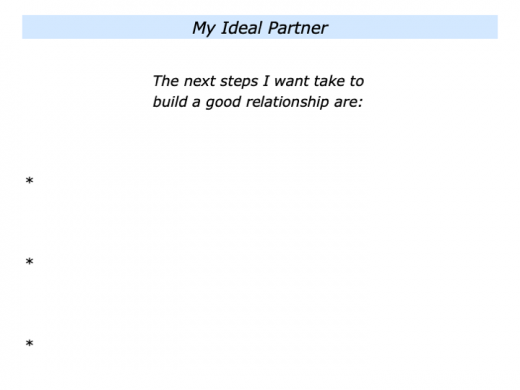
Managing
Differences Successfully
Virginia Satir believed that the way people managed their differences determined whether a relationship would flourish or die. This section describes an exercise that was inspired by her approach.
Although the exercise relates to couples, the principle of managing differences successfully has been applied to many other systems, such as teams and organisations.
Imagine you are working with a couple. You can invite them to work through the following steps. Each person makes lists describing the following things.
Similarities: How my
partner is similar to me
This can cover every aspect of life. These may include values, attitudes, habits, behaviour, physical things, psychological things, philosophical things or other topics. A person may list the way their partner is similar to them by writing the following:
“They have two children – ours; they like walking in the countryside; they get angry about injustice; they like Italian food; they enjoy watching sport; they enjoy having pets; etc.”
Differences: How my
partner is different from me
This can also cover every aspect of life. A person may list how their partner is different from them by writing:
“They are a morning person, whilst I am an evening person; they are introvert, whilst I express my feelings; they have different standards of tidiness in the house; they drink quite a lot; etc.”
Similarities: How we can build
on what we have in common
Each partner describes how they want to build on what they have in common. Providing these are healthy similarities – things that benefit both – it can be good to build on this foundation. For example, people may plan to share more projects in the future.
Differences: How we can
manage the differences
This is the crunch part. Differences can make or break a relationship. They can add juiciness or they can be a nightmare.
Each person is to take the following steps. Looking at how their partner is different, they can explore the following themes.
The differences they want to encourage – because these make the other person special.
The differences they are prepared to accept – because their partner probably won’t change certain habits. Bearing in mind the whole package involved in living with their partner, they may be prepared to accept some of the differences.
The differences they would like their partner to change and how they would like them to behave. It is vital for them to give a positive alternative.
This final point is crucial. For example, Partner A may be upset because Partner B behaves in a certain way – such as suppressing their feelings, drinking lots of alcohol, fighting dirty during arguments or whatever.
Partner A has several options. Each option has consequences.
They can put up with the behaviour.
They can harangue the other person and hope they will change.
They can give the other person a positive alternative. They can explain how they would like the person to behave in the future. They can also describe the potential benefits for everybody.
Imagine Partner A gives a positive alternative but Partner B says:
“I am not prepared to change.”
Partner A can then ask themselves:
“Am I prepared to stay in the relationship? Is it worth the whole package?”
If so, fine. If not, then Partner A has a decision to make. Here is the exercise on the theme of managing differences successfully.
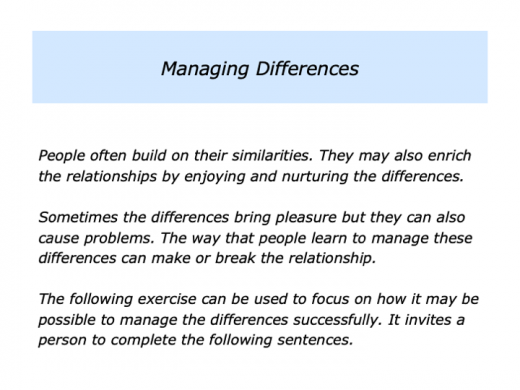
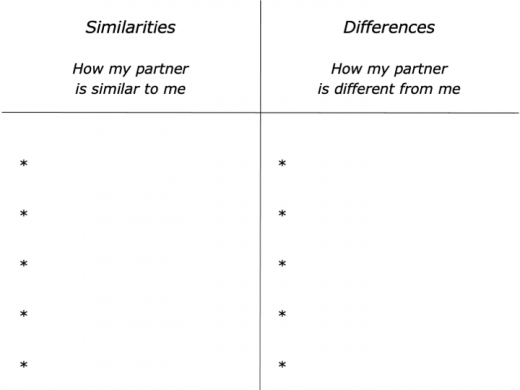
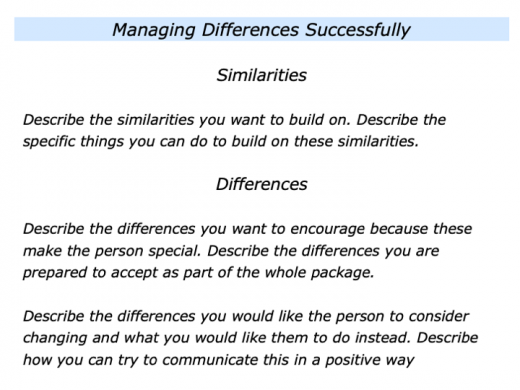
Virginia opened people’s eyes to the importance of managing differences successfully. This idea has been used many other people.
Looking at my own work, for example, I apply it to building positive teams. As described elsewhere in the book:
Great teams are based on similarity of spirit and diversity of strengths.
Healthy systems – whether they are families, teams or organisations – are based on similar values. These provide the foundation. They only flourish, however, if on top of this they encourage variety.
Let’s return to your own life and work. Looking ahead, can you think of a situation when you may want to follow some of the principles in the generous guide approach?
How can you be generous but not be taken for granted? How can you welcome the person and make clear working contracts? How can you clarify their goals?
How can you then use the customised approach? How can you, if appropriate, help them to see the big picture? How can you pass on knowledge and practical tools that resonate with the person?
How can you help them to map their chosen way forwards? How can you help them to rehearse following their strategy? How can you help them to achieve the desired concrete results?
If you wish, try tackling the exercise on this theme. This invites you to complete the following sentences.
